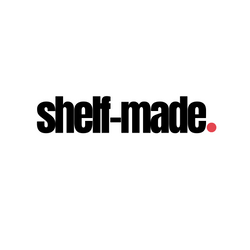Build Your Author Platform - Website + Email List (Your Non-Negotiable Foundation)
Real Talk: If you don't own your audience, you don't have a business. Social media platforms can (and will) change algorithms overnight. Your Instagram account could get hacked. TikTok might get banned. Your website and email list? Nobody can take those away.
This is your marketing foundation. Everything else builds on top of it. Skip this step, and you're building on quicksand.
Why Your Author Website Matters in 2025
Your website is your digital home base—the one place online you completely control. No algorithm decides who sees your content. No platform can shut you down. No competitor can outbid you for visibility.
What Your Author Website Needs
Mobile-First Design
Over 60% of book browsers use phones. If your site looks terrible on mobile, you're losing sales. Use platforms like Squarespace, Wix, or WordPress with mobile-responsive themes. Test your site on multiple devices before launching.
Fast Loading Speed
Readers bounce if pages take longer than 3 seconds to load. Compress images, minimize plugins, and use reliable hosting (SiteGround, Bluehost, or platform-specific hosting).
Clear Value Proposition
Visitors should understand who you are and what you write within 5 seconds of landing on your homepage. Don't make them hunt for basic information.
- Hero section with your name, what you write, and why they should care
- Professional author photo
- Clear navigation to books, about, and contact pages
Strategic Book Pages
Each book needs its own dedicated page with:
- Compelling hook (not just a plot summary)
- Reader reviews and testimonials (social proof sells)
- Direct buy links to multiple retailers (never just Amazon)
- Sample chapters or excerpts (let readers try before they buy)
- Content warnings if relevant (readers genuinely appreciate this)
Lead Magnet That Actually Converts
Nobody wants another generic newsletter. Offer something genuinely valuable:
- Free novella set in your book's world
- Exclusive deleted scenes or bonus chapters
- Printable character art, maps, or mood boards
- Reading order guide for your series
- Early access to new releases (VIP treatment)
Platform Recommendations
Squarespace: Beautiful templates, easy for beginners, all-in-one solution. Best for authors who want professional design without technical skills. ($16-$23/month)
WordPress.org: Most flexible, infinite customization, requires more learning. Best for tech-comfortable authors who want complete control. (Hosting $3-15/month + theme costs)
Wix: Drag-and-drop simplicity, good templates, solid for beginners. Middle ground between Squarespace and WordPress. ($16-$27/month)
Author-Specific Platforms: Services like AuthorSites.org or Reedsy's Author Website Builder cater specifically to writers but offer less flexibility.
Email Marketing That Actually Works
Your email list is your most valuable asset. These are people who explicitly want to hear from you. They convert to buyers at 10-20x the rate of social media followers.
Stop Making These Email Mistakes
"I don't want to bother people" is costing you sales. Readers who want to hear from you won't mind. Those who don't will unsubscribe—and that's actually good. A smaller, engaged list beats a massive, inactive one.
Emailing only when you have a book launching trains readers to expect sales pitches. Then they ignore you. Email at least once monthly with valuable content, not just promotion.
Generic newsletters nobody wants to read. "Here's what I've been up to" doesn't cut it. Give readers something: entertainment, value, exclusive content, or genuine connection.
Email Frequency Guide
- Minimum: Monthly (stay on readers' radar)
- Sweet Spot: Bi-weekly to weekly (builds real connection)
- Maximum: 2-3x weekly (only if content is genuinely valuable)
Pro tip: Send more frequently than you're comfortable with. You'll be surprised how few people actually unsubscribe.
What to Email About
Story-First Approach
Don't just announce "my book is on sale." Share why you wrote it, what inspired specific scenes, funny stories from the writing process, or character development insights. Connection first, promotion second.
Behind-the-Scenes Content
Readers love seeing the messy middle of your creative process:
- Excerpt teasers from works-in-progress
- Cover design reveals and voting
- Character mood boards or playlists
- Writing space tours
- Day-in-the-life author content
Valuable Resources
- Recommend other books in your genre (readers appreciate curation)
- Share writing tips if your audience includes aspiring authors
- Create reading order guides or character guides
- Offer free downloadable content (wallpapers, printables)
Exclusive Perks
Make subscribers feel special with:
- Early access to new releases (24-48 hours before public)
- Subscriber-only sales or discounts
- Bonus chapters or deleted scenes
- Naming characters after subscribers
- Virtual launch parties or Q&A sessions
Email Automation (Set It and Forget It)
Welcome Sequence (Essential)
When someone subscribes, trigger an automated 3-5 email series:
- Deliver your lead magnet + introduce yourself
- Share your author story and what you write
- Recommend where to start with your books
- Behind-the-scenes content or favorite reader reviews
- Invite them to follow on social media
Post-Purchase Sequence
When someone buys a book (use BookFunnel or similar to track), send automated emails:
- Thank you + reading tips
- Request for honest review (after reasonable reading time)
- Recommendation for next book in series
- Exclusive bonus content related to what they bought
Re-Engagement Campaigns
If subscribers haven't opened emails in 60-90 days, trigger a "we miss you" sequence offering something valuable to win them back. If they still don't engage after 120-180 days, consider removing them (clean lists perform better).
Email Tools Worth Using
ConvertKit ($0-25/month): Best for creators, excellent automation, designed for authors and bloggers. Free up to 1,000 subscribers.
Mailchimp ($0-20/month): User-friendly interface, free tier for beginners, good templates. Limited automation on free plan.
MailerLite ($0-10/month): Budget-friendly, solid features, good for starting out.
Substack (Free + optional paid tiers): If you're building a paid newsletter community, Substack handles subscriptions and payments. Less customization but dead simple.

